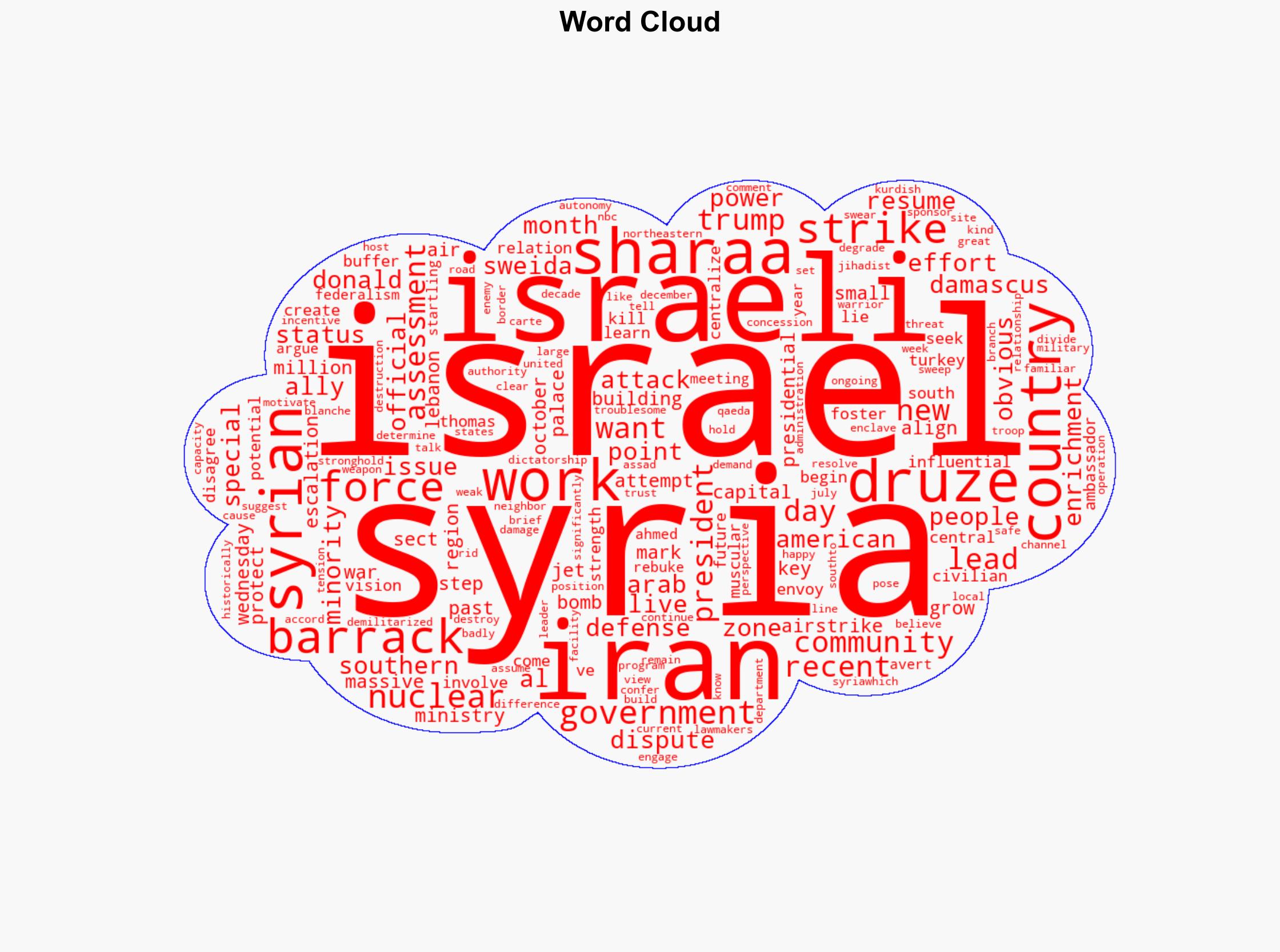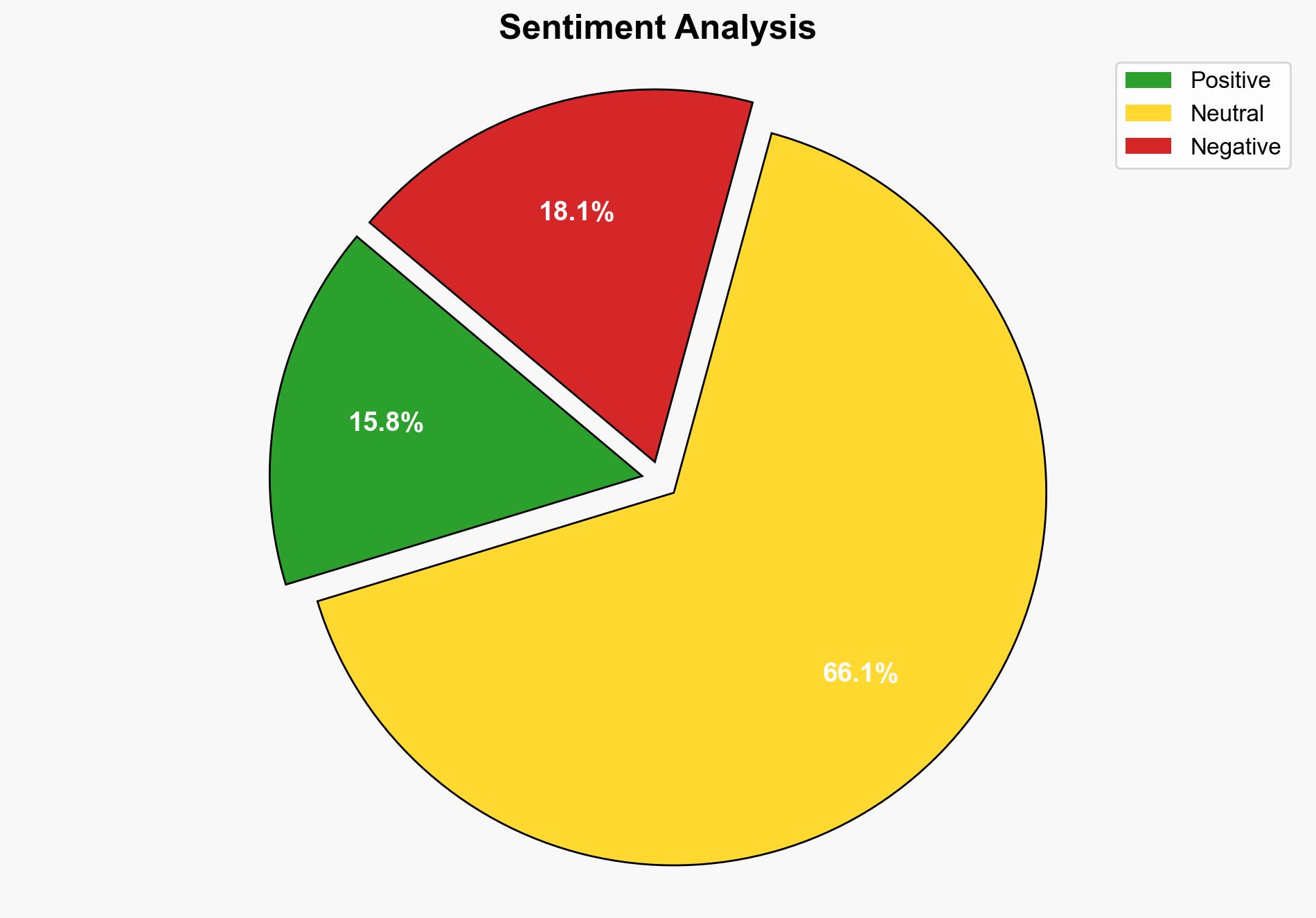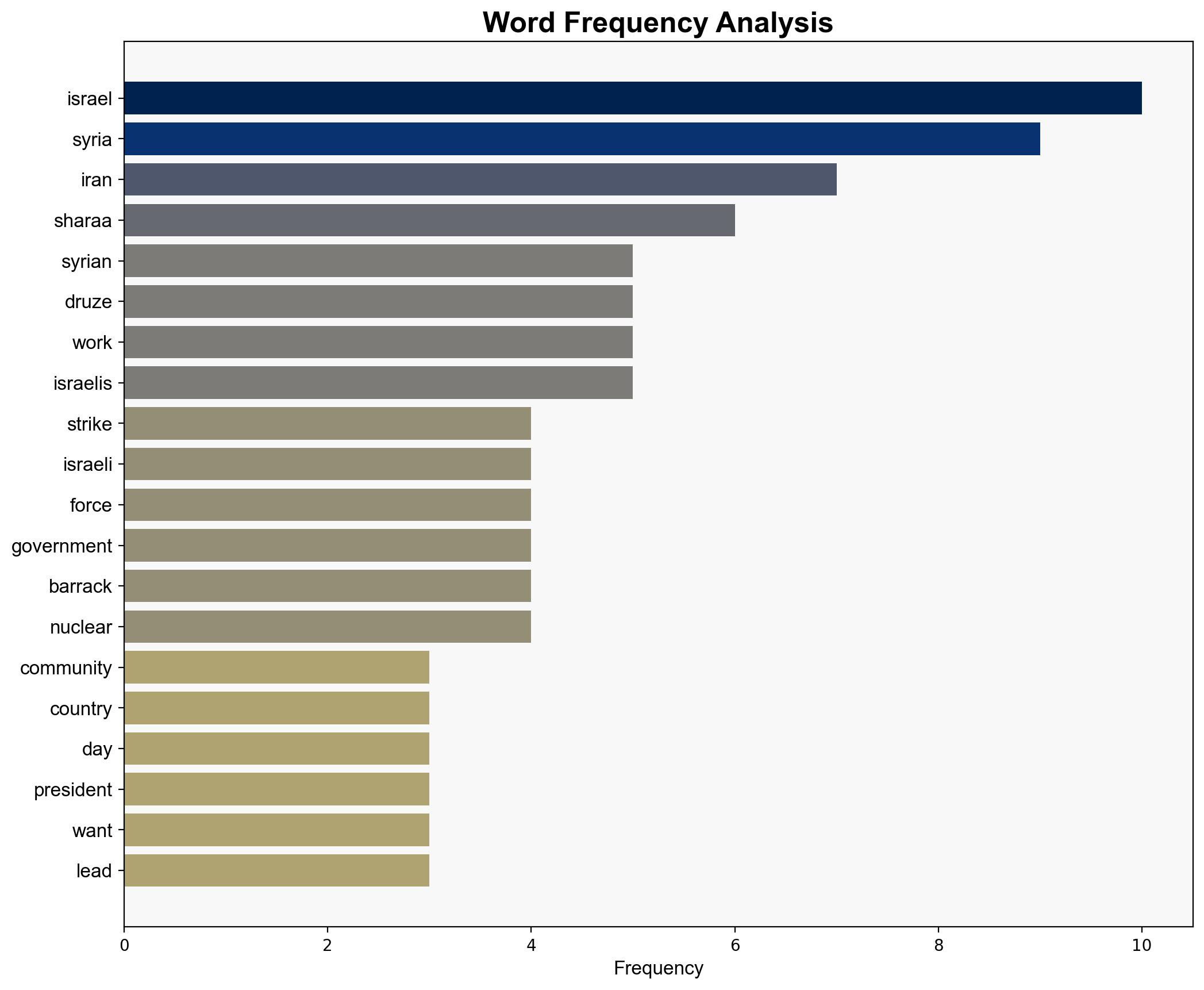The Wars of October 7 Are Not Over – Lawyersgunsmoneyblog.com
Published on: 2025-07-19
Intelligence Report: The Wars of October 7 Are Not Over – Lawyersgunsmoneyblog.com
1. BLUF (Bottom Line Up Front)
The recent Israeli airstrikes on Syrian government facilities mark a significant escalation in regional tensions, particularly concerning the Druze community’s status in southern Syria. This development is intertwined with broader geopolitical dynamics involving the U.S., Israel, and Syria’s new leadership. The potential for increased conflict in the region is high, with implications for Iran’s nuclear capabilities and regional stability.
2. Detailed Analysis
The following structured analytic techniques have been applied to ensure methodological consistency:
Causal Layered Analysis (CLA)
Surface events: Israeli airstrikes on Damascus and the Syrian defense ministry.
Systemic structures: The ongoing conflict between Israel and Syria, with the Druze community as a focal point.
Worldviews: Israel’s strategic interest in a demilitarized southern Syria and its relationship with the Druze.
Myths: The perception of a centralized versus decentralized Syrian governance model.
Cross-Impact Simulation
The Israeli-Syrian conflict could destabilize neighboring regions, affecting Lebanon and potentially drawing in Iran due to its alliances.
Scenario Generation
Best Case: Diplomatic negotiations lead to a de-escalation of military actions and a stable governance model in Syria.
Worst Case: Escalation into a broader regional conflict involving multiple state and non-state actors.
Most Likely: Continued skirmishes with intermittent diplomatic efforts failing to achieve long-term stability.
3. Implications and Strategic Risks
The escalation poses risks of broader military conflict, potential cyber-attacks, and economic disruptions. The involvement of Iran and its nuclear ambitions further complicates the security landscape, increasing the risk of a multi-front confrontation.
4. Recommendations and Outlook
- Encourage diplomatic engagement with key regional players to de-escalate tensions.
- Enhance intelligence sharing among allies to monitor and mitigate potential threats.
- Prepare for potential cyber threats as a result of increased regional tensions.
- Scenario-based projections: In the best case, diplomatic efforts succeed; in the worst case, regional conflict escalates; most likely, tensions persist with sporadic violence.
5. Key Individuals and Entities
Thomas Barrack, Ahmed al Sharaa, Donald Trump
6. Thematic Tags
national security threats, cybersecurity, counter-terrorism, regional focus





